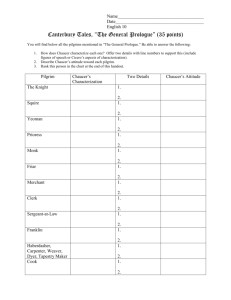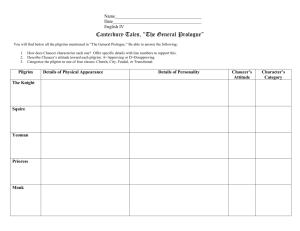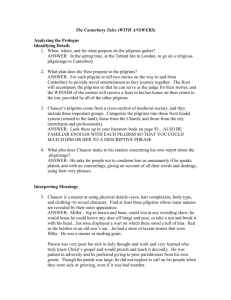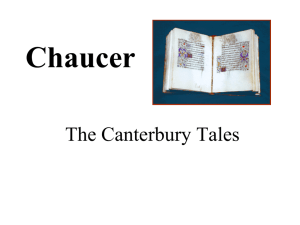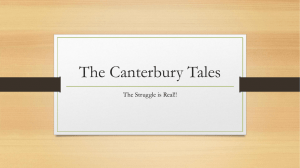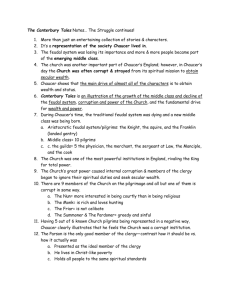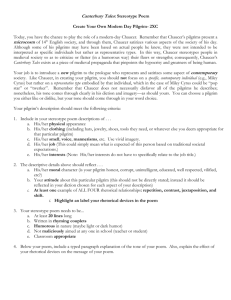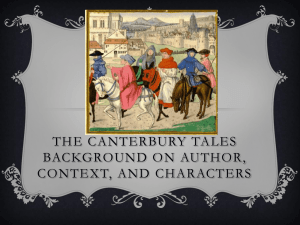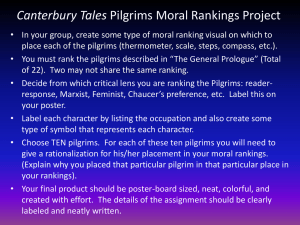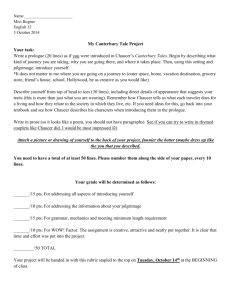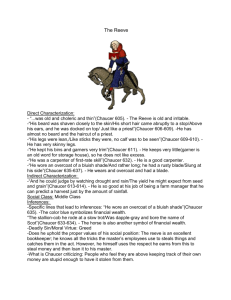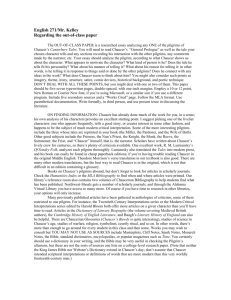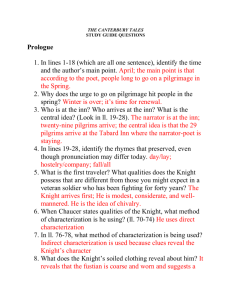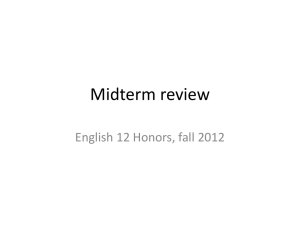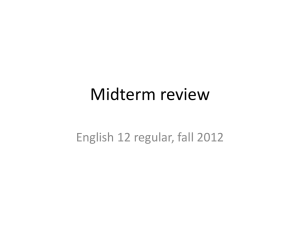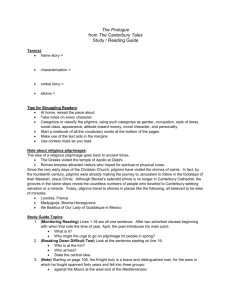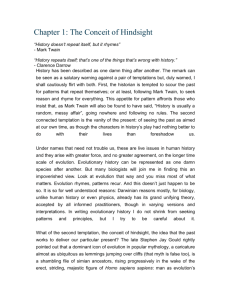Making Meanings from The Canterbury Tales: The Prologue
advertisement
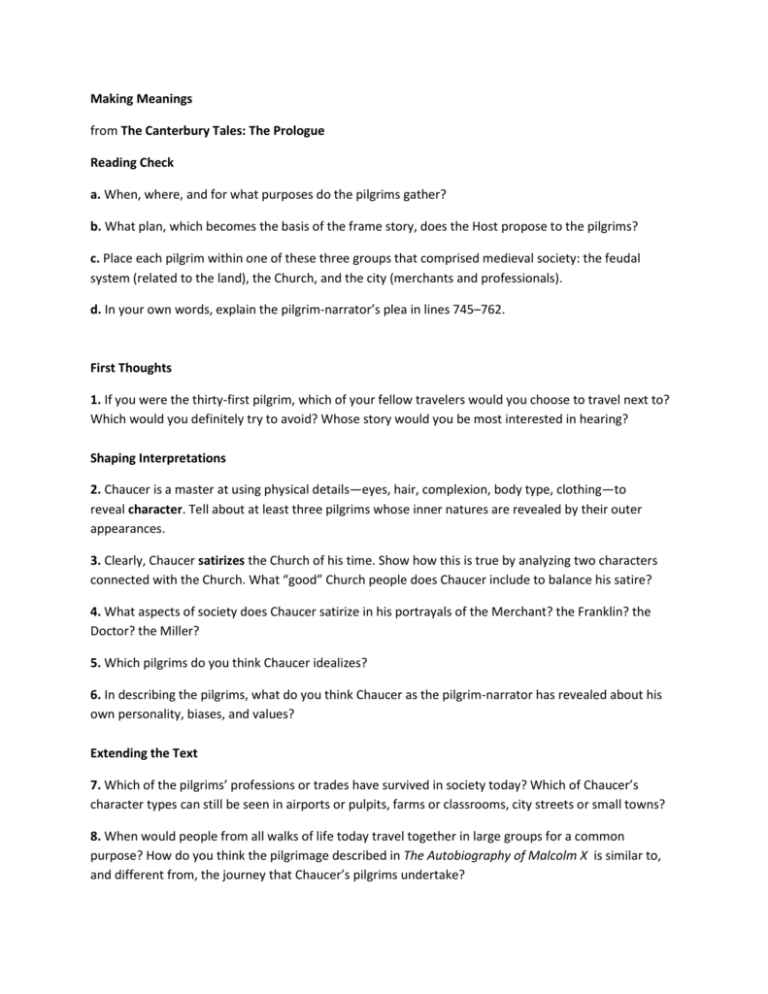
Making Meanings from The Canterbury Tales: The Prologue Reading Check a. When, where, and for what purposes do the pilgrims gather? b. What plan, which becomes the basis of the frame story, does the Host propose to the pilgrims? c. Place each pilgrim within one of these three groups that comprised medieval society: the feudal system (related to the land), the Church, and the city (merchants and professionals). d. In your own words, explain the pilgrim-narrator’s plea in lines 745–762. First Thoughts 1. If you were the thirty-first pilgrim, which of your fellow travelers would you choose to travel next to? Which would you definitely try to avoid? Whose story would you be most interested in hearing? Shaping Interpretations 2. Chaucer is a master at using physical details—eyes, hair, complexion, body type, clothing—to reveal character. Tell about at least three pilgrims whose inner natures are revealed by their outer appearances. 3. Clearly, Chaucer satirizes the Church of his time. Show how this is true by analyzing two characters connected with the Church. What “good” Church people does Chaucer include to balance his satire? 4. What aspects of society does Chaucer satirize in his portrayals of the Merchant? the Franklin? the Doctor? the Miller? 5. Which pilgrims do you think Chaucer idealizes? 6. In describing the pilgrims, what do you think Chaucer as the pilgrim-narrator has revealed about his own personality, biases, and values? Extending the Text 7. Which of the pilgrims’ professions or trades have survived in society today? Which of Chaucer’s character types can still be seen in airports or pulpits, farms or classrooms, city streets or small towns? 8. When would people from all walks of life today travel together in large groups for a common purpose? How do you think the pilgrimage described in The Autobiography of Malcolm X is similar to, and different from, the journey that Chaucer’s pilgrims undertake?
